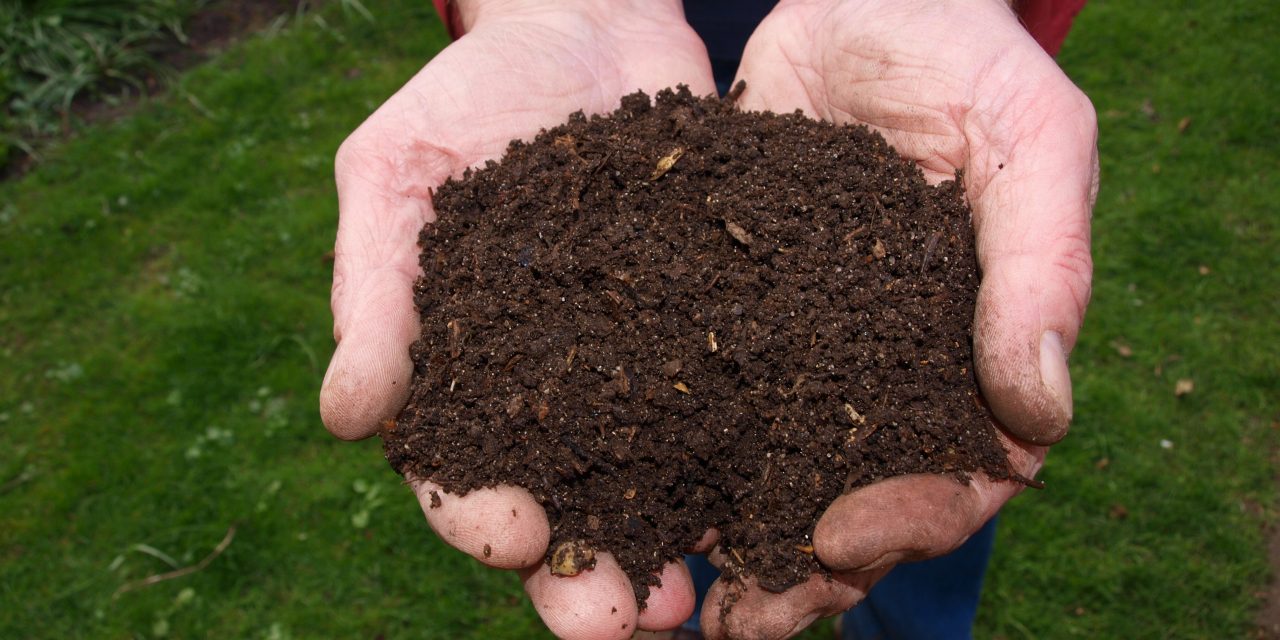The closer an ecosystem is to its natural, steady state, the more stable it will be when placed under chronic or severe stress. As ecological stresses from the effects of climate change worsen — manifesting as more severe droughts, more frequent flooding, and other hazards —utilizing compost can enable stormwater professionals to help improve ecosystem resilience by replenishing and maintaining organic matter and carbon stores in our soils.
Superior Water Retention
Compost-based best management practices (BMPs) can play an integral part in sustaining the resilient infrastructure we need in order to help mitigate the effects of climate change.
High concentrations of organic matter and carbon in compost have the ability to increase soil water-holding capacity, thereby retaining moisture longer during dry periods and requiring less irrigation when water is in high demand. Applying compost to soils promotes plant life and soil organisms, which in turn enhance soil stability and minimize soil erosion while maintaining natural evapotranspiration and surface water recharge rates. Compost also enhances the soil’s absorption capacity, enabling it to hold and infiltrate high levels of rainfall that would otherwise become stormwater runoff.
According to a 2015 Michigan State University (East Lansing) report, soil can hold up to 62,500 L (16,500 gal) of plant-available water per acre for every 1% of organic matter it contains. Similarly, a 2003 white paper from University of Georgia (Athens) researchers reports that compost-amended soils can reduce irrigation requirements for various plants by as much as 30%, lending evidence that compost can decrease irrigation requirements and improve plant survival under dry, water-stressed climate conditions.
Other research demonstrates how compost applied to soil surfaces can
- absorb as much as 80% of a 10-cm (4-in) rainfall event, reducing runoff generation by up to 97% over multiple high-intensity, high-accumulation storm events;
- shrink stormwater peak flows — when runoff is at its most destructive and erosive — by up to 51%; and
- increase microbial carbon in disturbed soils by 60%, resulting in a 300% increase in plant cover compared to conventional vegetation establishment practices.
Protecting Natural Cycles
Compost-based BMPs can help improve ecosystem resilience by maintaining and restoring the natural cycles on which healthy watersheds rely: the water cycle, the carbon cycle, and nutrient cycles.
Development and urbanization often break water’s cyclical pattern and hamper a healthy watershed’s ability to recharge surface waters, groundwater, and the atmosphere through evapotranspiration. Compost-based Sustainable Management Practices restore the water cycle in our watersheds by maintaining and reestablishing natural water absorption, infiltration, and evaporation rates, and, of course, by sustaining vegetation.
Emitting high volumes of carbon-based gases into the atmosphere has thrown the carbon cycle increasingly out-of-balance, affecting the global climate. Organic wastes in landfills emit methane gas, a carbon-based gas 25 times more concentrated in carbon than carbon dioxide. Landfills are the leading source of this potent greenhouse gas in the U.S. and most developed nations. By utilizing compost, we keep these organic wastes out of landfills, thereby preventing methane from forming. Additionally, applying stable carbon to soils through compost sequesters carbon from the atmosphere. By helping to establish and sustain permanent vegetation with compost, photosynthesis sequesters even more carbon. Through the use of compost-based BMPs, carbon-based gases are simultaneously prevented from entering the atmosphere and removed from it, helping to restore the natural carbon cycle and slowing the rate of global climate change.
Nutrient cycles, particularly those involving nitrogen, are also affected by compost use. One of the many benefits of composting is that it transforms different species of inorganic nitrogen — such as ammonium, nitrite, and nitrate — that are highly mobile and often lead to water pollution, into more stable, less mobile organic nitrogen. Collecting and managing these inorganic nutrients through composting programs helps maintain the nitrogen cycle at the local or regional level, preventing water pollution. By applying organic materials and nutrients that are available to plants based on their natural demands, plant communities are healthier, ecological succession is more common and efficient, and the encompassing ecosystem becomes significantly more resilient.
Nature, science, and innovation have shown by restoring natural cycles we can have a profound impact on resilience. Leave it to nature to teach us that even cycles are not exclusive, closed loop systems, but are in fact naturally synergistic. Reducing carbon footprint and managing nutrient cycles improves water quality – and vice versa. Building an infrastructure based on these natural models will be a leading driver of innovation for public and private sector professionals in our industry for the foreseeable future.
Top image courtesy of Pixabay
ABOUT THE AUTHOR
Britt Faucette, PhD, CPESC, LEED AP, has been the Director of Research and Technical Services for stormwater management technology manufacturer Filtrexx International (Atlanta, Georgia) for nearly 20 years. He has published two books on organic materials and authored over 20 peer-reviewed journal publications on organic materials use in erosion control and stormwater management applications. Reach Dr. Faucette at britt.faucette@filtrexx.com.






